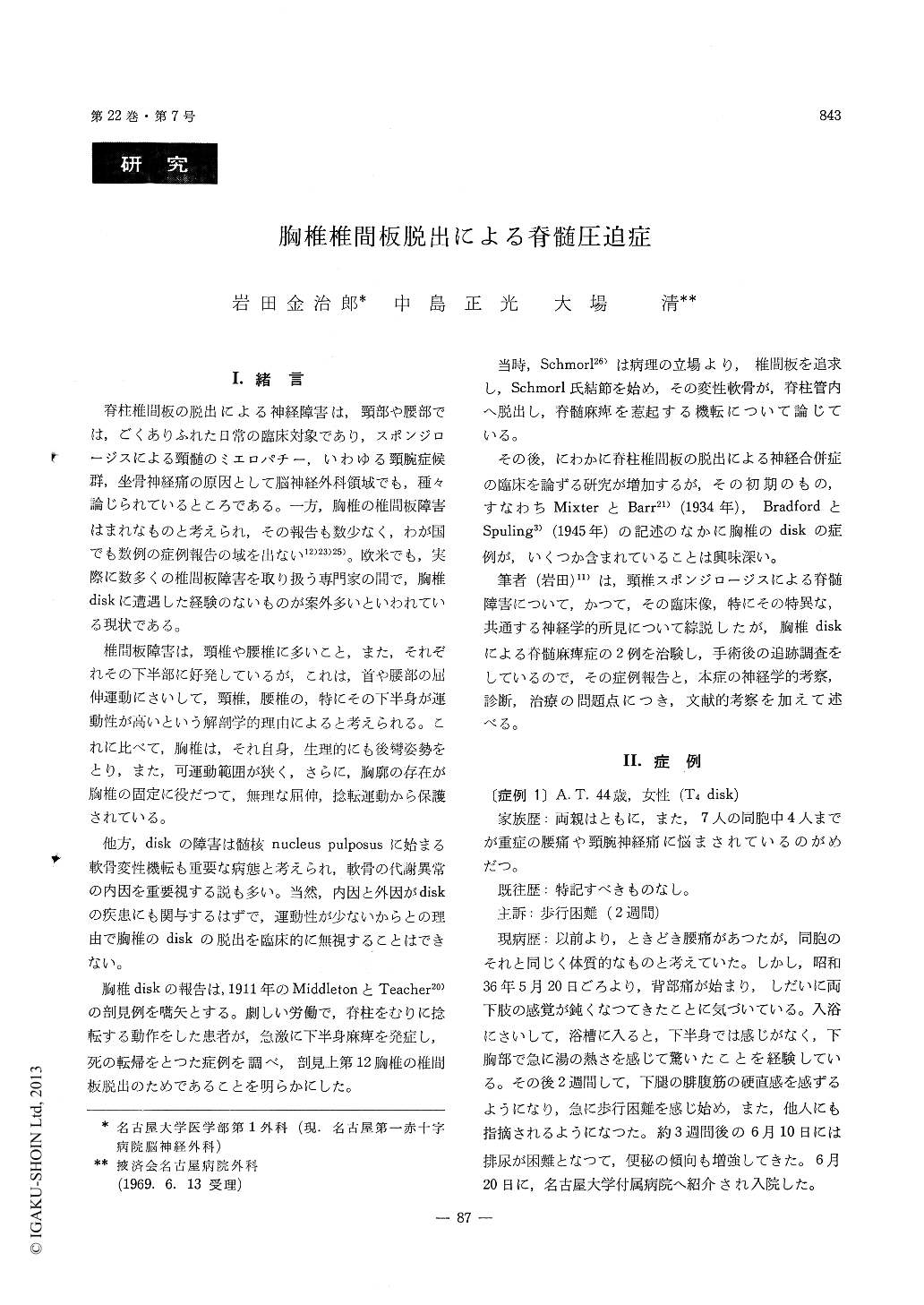Japanese
English
- 有料閲覧
- Abstract 文献概要
- 1ページ目 Look Inside
I.緒言
脊柱椎間板の脱出による神経障害は,頸部や腰部では,ごくありふれた日常の臨床対象であり,スポンジロージスによる頸髄のミエロパチー,いわゆる頸腕症候群,坐骨神経痛の原因として脳神経外科領域でも,種々論じられているところである。一方,胸椎の椎間板障害はまれなものと考えられ,その報告も数少なく,わが国でも数例の症例報告の域を出ない12)23)25)。欧米でも,実際に数多くの椎間板障害を取り扱う専門家の間で,胸椎diskに遭遇した経験のないものが案外多いといわれている現状である。
椎間板障害は,頸椎や腰椎に多いこと,また,それぞれその下半部に好発しているが,これは,首や腰部の屈伸運動にさいして,頸椎,腰椎の,特にその下半身が運動性が高いという解剖学的理由によると考えられる。これに比べて,胸椎は,それ自身,生理的にも後轡姿勢をとり,また,可運動範囲が狭く,さらに,胸廓の存在が胸椎の固定に役だつて,無理な屈伸,捻転運動から保護されている。
Two cases of spinal paralysis due to herniated thoracic disks are described, 1) T4 and 2) T8 and T10. Both patients were middle aged women who developed spastic paraplegia following sensory paral-ysis of the lower half of the body for about two weeks' duration.
No attempt was made to excise these calcified disks, but wide decompressive procedure was done in which the spinal cord was compressed in the midline ventrally, and excellent recovery was obtain-ed in both patients with almost normal spinal func-tion.
Emphasis was made not to overlook this condition although it was considered rare incidence in the literature. Early diagnosis and early relief of spinal compression provids the good prognosis. Literatures about thoracic disk myelopathy were reviewed and neurological discussion was made, while cervical spondylotic myelopathy gives rises to spasticity of lower limbs with early involvement of corticospinal tract in pathogenesis, thoracic myelopathy involves the spinothalamic tract first, then advances rapidly to spinal paralysis once cortio-spinal tract involve-ment began. When pyramidal sign develops, surgi-cal relief of the thoracic cord compression should be considered on emergency basis, as in thoracic myelopathy, cord is involved from ventral portion in order.
On diagnosis, lateral tomography of thoracic spine is helpful and as for treatment, wide decompressive procedure can provide satisfactory recovery.

Copyright © 1970, Igaku-Shoin Ltd. All rights reserved.


